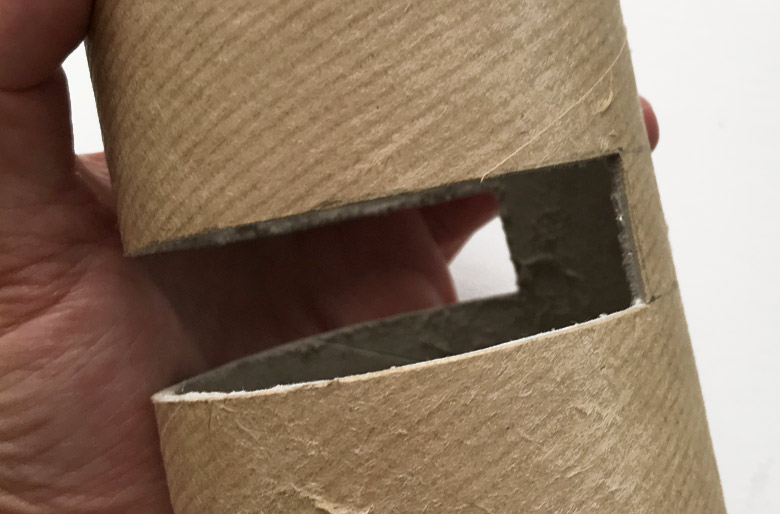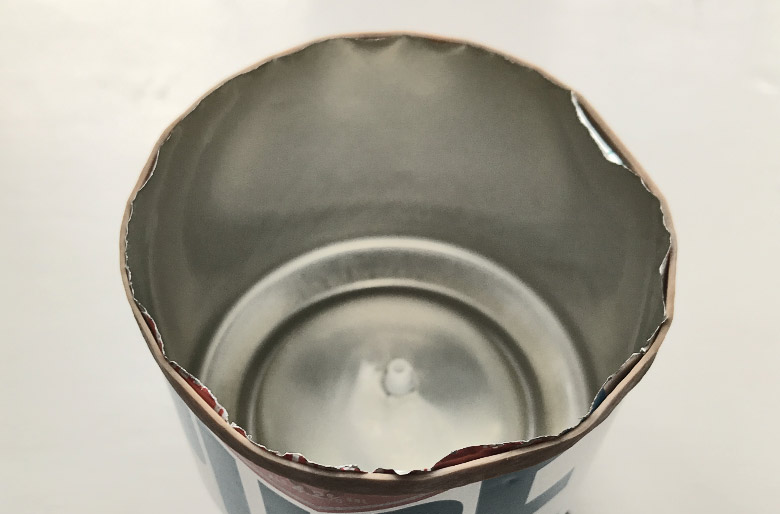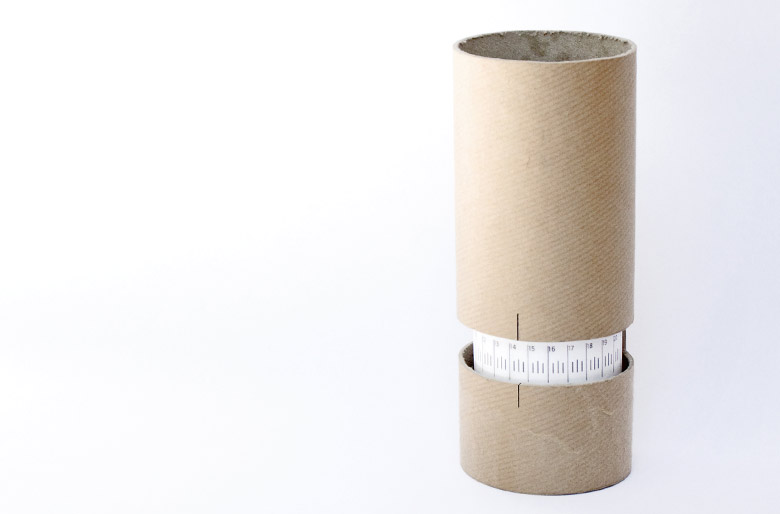Recycled Tube Clock
- Published 25-08-2021
- Share

"What is it with you and clocks lately!?" my wife taunted from the doorway, observing that I was indeed wrist-deep in another horological project at my desk.
I don't feel the remark was justified; I'm hardly a fanatical clock hobbyist. This is quite literally only the second (ha! Unintended clock joke) project of this ilk I've ever turned my interest to, the first being the Driftwood Tide Clock I built to reliably inform the household when we can expect optimum swimming/rock-pooling conditions respectively. These two projects alone, it seems, were enough to garner ridicule.
I don't feel the remark was justified; I'm hardly a fanatical clock hobbyist. This is quite literally only the second (ha! Unintended clock joke) project of this ilk I've ever turned my interest to, the first being the Driftwood Tide Clock I built to reliably inform the household when we can expect optimum swimming/rock-pooling conditions respectively. These two projects alone, it seems, were enough to garner ridicule.

This new clock - my Recycled Tube Clock - was a concept borne quite simply from gaining possession of a large cardboard tube and not wishing to throw it out without exploring its full potential.
Tubes are fascinating things indeed. They're vessels, passageways, barriers, extensions and sound amplifiers all at once. My kids feed toy cars and marbles through them, we use one to raise the garden sprinkler overhead for enhanced garden fun in the summer, and during Covid Halloween I even kept potentially infected trick-or-treaters at a safe distance by sliding their spoils towards them down one. Tubes are terrifically versatile.
Tubes are fascinating things indeed. They're vessels, passageways, barriers, extensions and sound amplifiers all at once. My kids feed toy cars and marbles through them, we use one to raise the garden sprinkler overhead for enhanced garden fun in the summer, and during Covid Halloween I even kept potentially infected trick-or-treaters at a safe distance by sliding their spoils towards them down one. Tubes are terrifically versatile.
And now I was to see how a cardboard tube would fare as an upcycled timepiece.
Believe it or not, as simplistic as the concept is, I designed the clock on paper first, sketching out the logistics of how the internal mechanisms would connect and operate. It's just as well I did, as this proved to be the most challenging aspect of the construction even with planning.
Believe it or not, as simplistic as the concept is, I designed the clock on paper first, sketching out the logistics of how the internal mechanisms would connect and operate. It's just as well I did, as this proved to be the most challenging aspect of the construction even with planning.

The process began by trimming the tube at both ends to rid it of damaged rims (marbles and cars are terribly unforgiving) and then slicing a segment three quarters of the circumference out of the body a short distance from the base. The remainder of the base was set to house the clock movement (the actual component that holds the battery, the cogs, the hand shaft etc.) so it's depth needed to be generous enough to shroud it.
Next I made good the roughened fibrous edges of the rims and slot to achieve the clean, stylised look I was going for.
Next I made good the roughened fibrous edges of the rims and slot to achieve the clean, stylised look I was going for.
The plan was for the clock to not have hands at all, but rather have its whole "face" rotate around a central point with an external fixed marker used to denote the time, a bit like a wind-up egg timer. I'd also opted for a 24 hour clock mechanism rather than a 12 hour, which would have bearing on how I designed the face - I'll get on to that in a moment.

The hand shaft, expecting a second, an hour and a minute hand be connected, is comprised of three integrated cylinders rotating independently of one another. The outermost cylinder is where the hour hand would normally affix, and given that my clock face design didn't concern itself with minutes or seconds, it was only this cylinder I needed to factor into my build. My clock face is a paper ribbon joined at the ends divided into 24 hourly segments, subdivided into four quarter-hourly segments. When I work, I do so in units of 15 minutes, so a face like this gives me the information I need at a glance. That plus owing to the modest diameter of the tube for use as a clock, including any more information to the face than this would make it near impossible to read.

The final step in the build was connecting the ribbon face to the mechanism's shaft outer. Initially I attempted to do this using suspended metal arms affixed to the ribbon inner, a bit like a lampshade. But just like a lampshade, this sat precariously, losing balance as it turned and getting stuck against the tube inner, grinding out the incorrect time.
I needed to find something more robust than the flimsy arms that was also light enough to be turned by the delicate shaft. I took a swig from my beer, dashed the can down on the desk and glanced around the room for viable candidates. Finding nothing I stalked around the house, eyeing up our possessions and furnishings with intent, but still came up empty. Another swig at my desk; the lightweight, destined-for-the-recycling-bin aluminium tin struck the coaster with its familiar tangy thunk. And there it was; the beer can! Of course! Famously lightweight and essentially the perfect size to slip within the cardboard tube, I could cut the can in half to form a drum around which I could wrap the ribbon.
I'm not sure what the safest way to neatly cut an aluminium can in half is, but I can assure you I did not employ it here. I emerged unscathed from the endeavour but I did have a lot of unpleasant serration to contend with afterwards. I also had to rescale and reprint my ribbon a number of times before I could successfully wrap it around the drum circumference in its entirety and have it meet seamlessly end to end.
I needed to find something more robust than the flimsy arms that was also light enough to be turned by the delicate shaft. I took a swig from my beer, dashed the can down on the desk and glanced around the room for viable candidates. Finding nothing I stalked around the house, eyeing up our possessions and furnishings with intent, but still came up empty. Another swig at my desk; the lightweight, destined-for-the-recycling-bin aluminium tin struck the coaster with its familiar tangy thunk. And there it was; the beer can! Of course! Famously lightweight and essentially the perfect size to slip within the cardboard tube, I could cut the can in half to form a drum around which I could wrap the ribbon.
I'm not sure what the safest way to neatly cut an aluminium can in half is, but I can assure you I did not employ it here. I emerged unscathed from the endeavour but I did have a lot of unpleasant serration to contend with afterwards. I also had to rescale and reprint my ribbon a number of times before I could successfully wrap it around the drum circumference in its entirety and have it meet seamlessly end to end.

With the ribbon slipped onto the can I used a mallet and screwdriver to puncture a hole in the base just wide enough to be forced snuggly onto the shaft cylinder, allowing clearance before the mechanism surface. I then transferred all of this into the tube
I then transferred all of this into the tube and made my final tweaks to the positioning.
So now, joining my collection of other hand-crafted curiosities around my workspace (my scaffolding-board desk, my cardboard shelving unit, my telephone planter) sits a 24-hour, 15 minute increment, minimally styled clock, fabricated from upcycled materials.
I then transferred all of this into the tube and made my final tweaks to the positioning.
So now, joining my collection of other hand-crafted curiosities around my workspace (my scaffolding-board desk, my cardboard shelving unit, my telephone planter) sits a 24-hour, 15 minute increment, minimally styled clock, fabricated from upcycled materials.
Want to read blog updates as they're published? Sign up to my newsletter for blog update alerts. Join my newsletter

 T-shirt challenge
T-shirt challenge